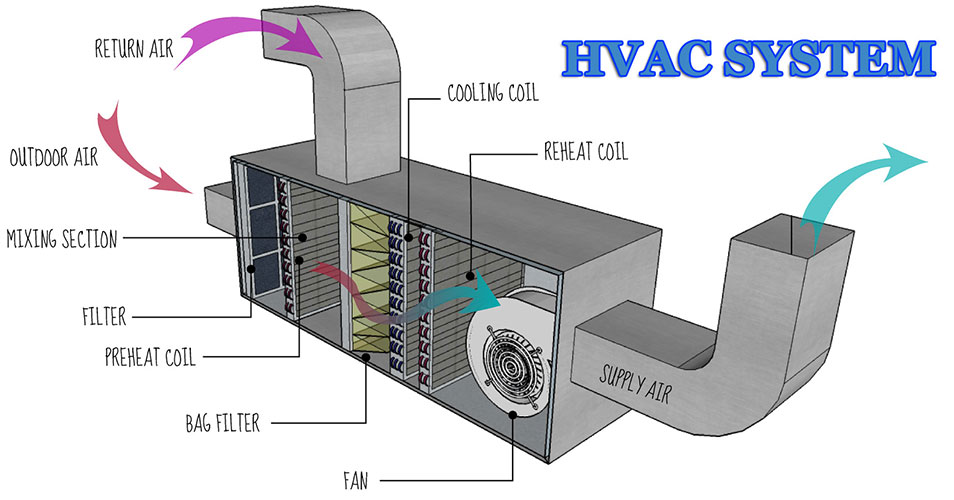What is the meaning of HVAC?
HVAC is an acronym for heating, ventilation, and air conditioning. As you might expect, it is a system that regulates the temperature, humidity, and air quality of indoor spaces. An HVAC system can employ elements such as furnaces or boilers, various types of ventilation systems, and air conditioning units.
When working together, these systems regulate temperature and humidity and keep the air fresh from pollutants and allergens. HVAC systems are critical when creating indoor environments that are safe and comfortable for people to use.
Components of an HVAC system
Let’s break down the three key elements of HVAC – heating units, ventilation ducts, and air conditioning before we look at how they work together.
Heating units:
Heating units generate heat to raise indoor temperatures during cold weather. A furnace burns fuel (natural gas or oil) to produce heat while boilers heat water to circulate through radiators or underfloor heating systems. The result is the interior of the building becomes warmer.
Ventilation ducts:
Ventilation ducts form a network of pathways throughout the building, allowing for the exchange of indoor and outdoor air – with fresh outdoor air entering and stale indoor air leaving. These systems often also filter out contaminants and pollutants. Ductwork can also distribute heated or cooled air from the HVAC system.
Air conditioning units:
These units regulate the indoor temperature and humidity. They are usually made up of compressors, condensers, evaporators, and refrigerant lines. During the process, refrigerant is compressed and circulated through the system, absorbing heat from indoor air and releasing it outdoors. In this way, it cools the indoor environment and reduces humidity.
How these three HVAC elements work together
HVAC works together to regulate air temperature, humidity, and overall air quality as follows: heating units raise indoor temperatures; ventilation systems ensure the circulation of fresh air and the removal of pollutants; and air conditioning units maintain comfortable temperatures and humidity levels by cooling and dehumidifying the air.

Types of HVAC systems
How do you choose the right HVAC system?
When selecting an HVAC system, there are several factors to consider:
Building size:
As a first step, it’s essential to know the square footage and building layout to determine the likely heating and cooling load requirements and then to ensure the HVAC system you select isn’t too large (or too small) for the job at hand.
Climate:
Putting together a research document that includes the local climate conditions, usual temperatures, humidity levels, and so on is a vital step. It’s also crucial to include whether the area is susceptible to extremes of weather in the summer or winter.
Energy efficiency ratings:
Finally, make sure you select an HVAC system with a good efficiency rating – this can be done by checking for certifications that demonstrate compliance with environmental standards.
